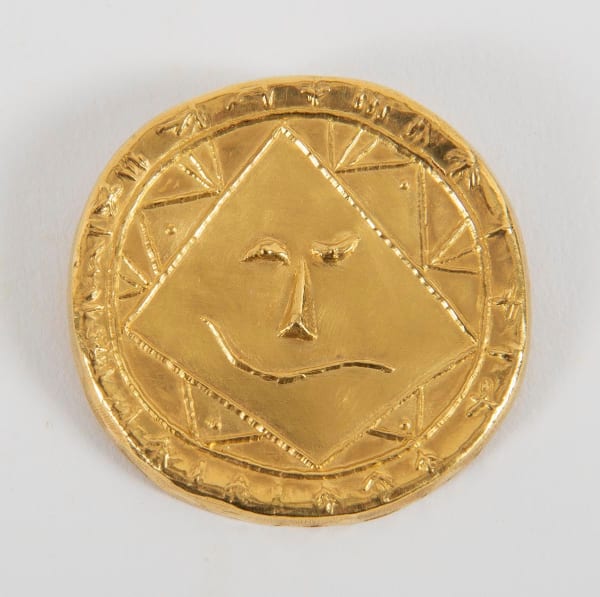MARUANI MERCIER is pleased to present ceramics and works on paper that underscore Pablo Picasso's remarkable multidisciplinary prowess and innovation. He first experimented with ceramics in the mid-1940s after encountering the works of the Madoura ceramic workshop, owned by Suzanne and Georges Ramié. Entranced by the medium's malleability and the firing process, Picasso struck a deal with the Ramiés, granting them permission to produce and sell editions of his ceramic works. His playful and expressive approach breathed life into these objects, paving the way for clay to be recognized as a legitimate art form. The ceramics presented in the exhibition are comprised of vessels and plates that delve into familiar themes from Picasso's earlier oeuvre, including animals, acrobats, bullfights, and mythological figures. The strength of Picasso's drawings lies in their spontaneity, offering a direct glimpse into the artist's creative process and inner thoughts. He utilized drawing as a tool to organize his thoughts, jot down his concepts, and tackle visual challenges. For him, drawing wasn't just a step in his creative process; it held significance as a finished artwork.
On Ceramics
From 1947 to 1971, Pablo Picasso produced 633 unique ceramic editions, along with numerous variants and unique pieces. These works engage in a rich dialogue with his sources of inspiration, including classical ceramics adorned with red and black figures, Etruscan buccheri, Spanish and Italian folk ceramics, fifteenth-century Italian graffiti, and Mediterranean artifacts depicting fish, mythical creatures, owls, birds, and even Mesoamerican terracottas.
Initially, Picasso focused on creating simple, functional items like plates and bowls. However, he gradually progressed to more complex designs such as pitchers and vases, some of which featured handles shaped like facial features or elements of his animal subjects. Throughout his career, Picasso explored various ceramic techniques, experimenting with paint, manipulating forms, and engraving the clay's surface. His extensive research led him to adopt two main production methods.
The first method involved meticulously hand-replicating an original piece, faithfully following its form and decoration. The second method saw Picasso creating original images in dry clay molds, which were then transferred onto fresh clay. Pieces made using this technique bear the mark 'Empreinte Originale de Picasso'. Each ceramic piece created by Picasso includes a stamp or marking, typically found on the underside, the reverse, or sometimes inside the work. These stamps and markings vary between editions and evolved over time. The most common marks are 'Madoura Plein Feu', 'Empreinte Originale de Picasso', and 'Edition Picasso'.
© Succession Picasso
 Pablo PicassoMédaillon Tête géométrique, 195623 karat gold medallion with an original wood boxdiameter: 5 cm, 2 in
Pablo PicassoMédaillon Tête géométrique, 195623 karat gold medallion with an original wood boxdiameter: 5 cm, 2 in Pablo PicassoMédaillon Visage au carton ondule, circa 1955 - 195623 karat gold medallion with an original wood boxdiameter: 5 cm, 2 in
Pablo PicassoMédaillon Visage au carton ondule, circa 1955 - 195623 karat gold medallion with an original wood boxdiameter: 5 cm, 2 in Pablo PicassoSea View tapisserie, 1965Wool velour and weft woven cotton173 x 240 x 1.5 cm
Pablo PicassoSea View tapisserie, 1965Wool velour and weft woven cotton173 x 240 x 1.5 cm



